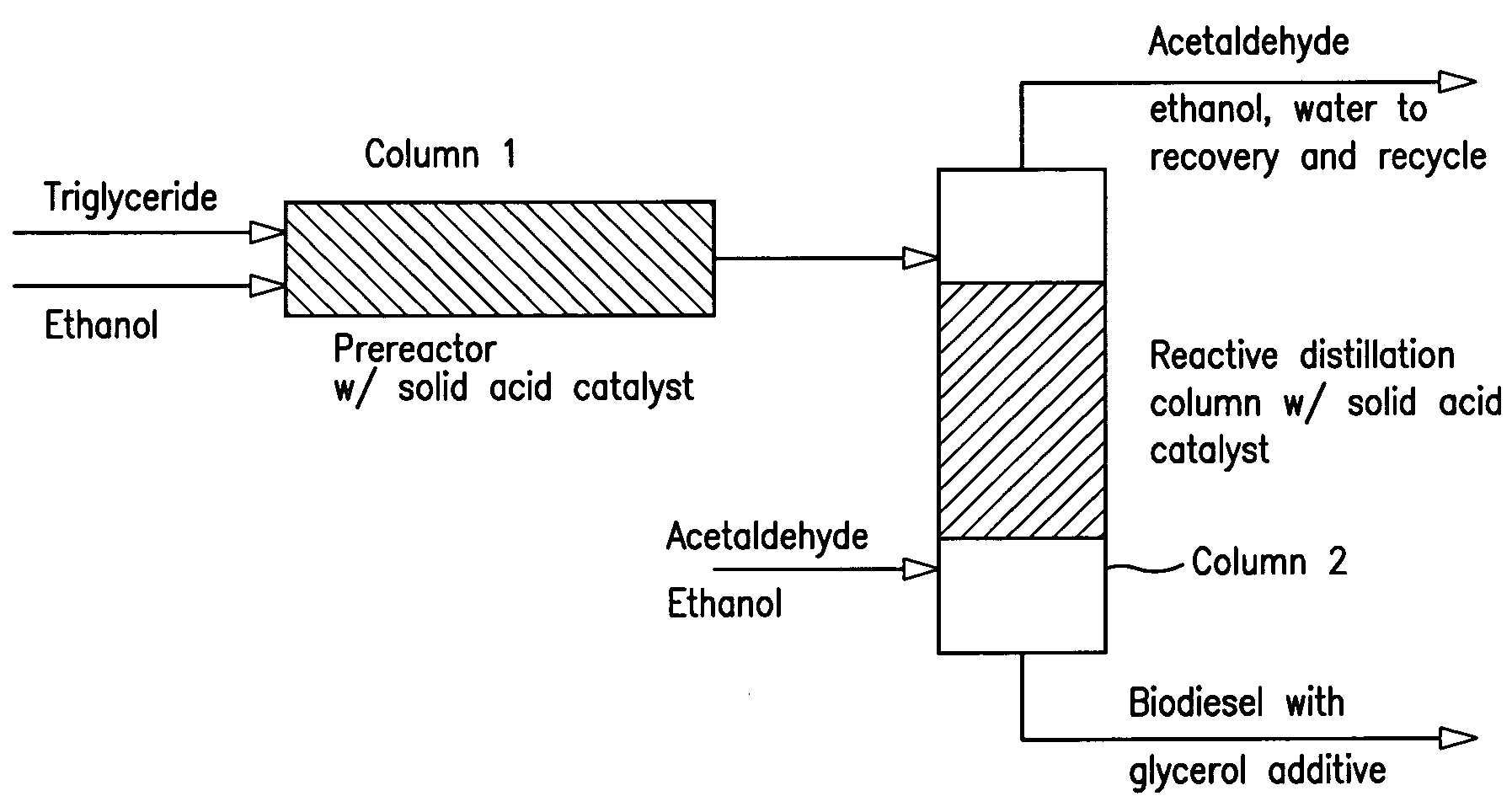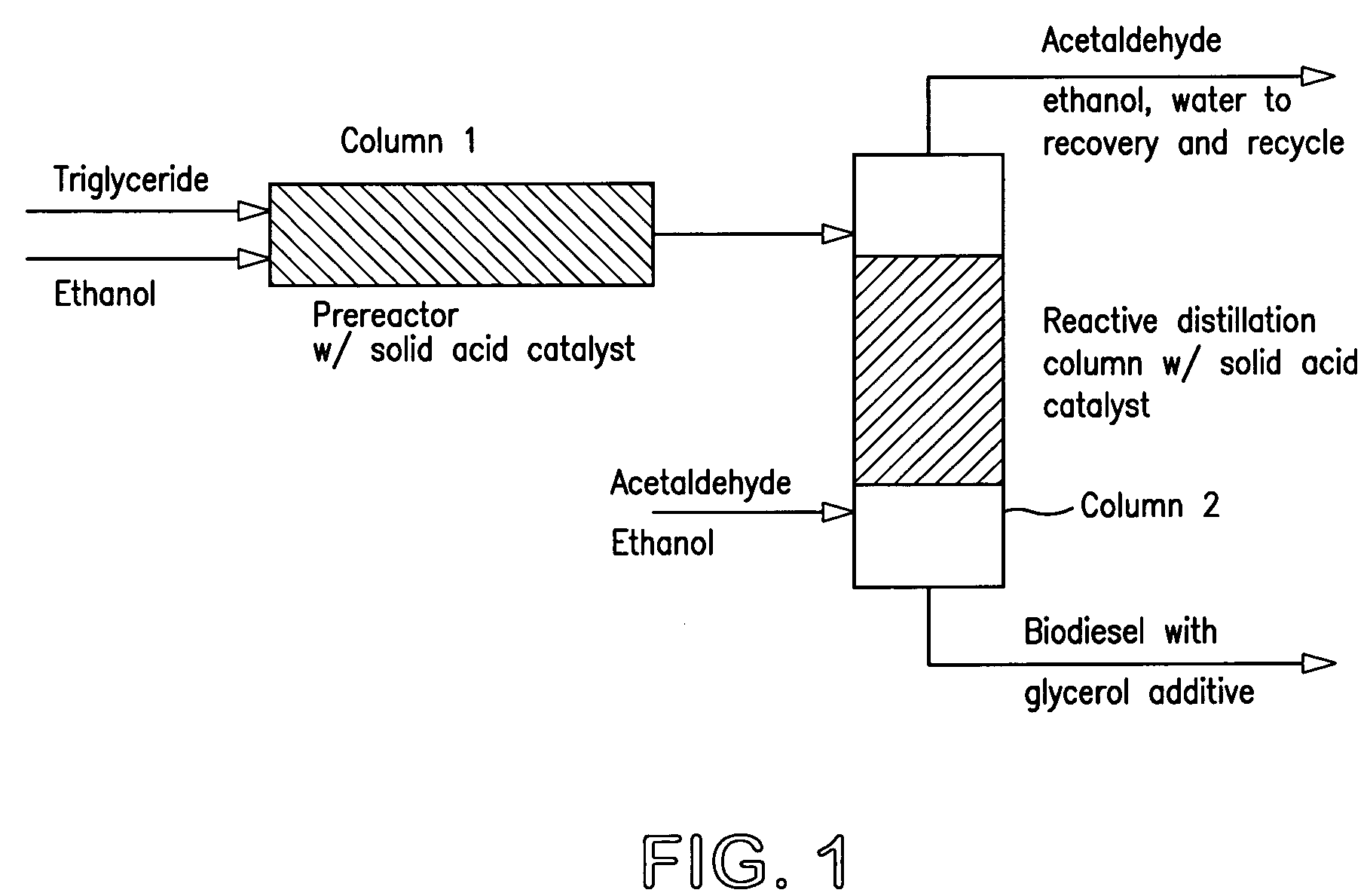Process for production of a composition useful as a fuel
a technology for fuels and compositions, applied in the direction of fatty acid chemical modification, fatty-oil/fat refining, sustainable manufacturing/processing, etc., to achieve the effects of improving fuel properties, improving solubility, and improving efficiency of operation
- Summary
- Abstract
- Description
- Claims
- Application Information
AI Technical Summary
Benefits of technology
Problems solved by technology
Method used
Image
Examples
Embodiment Construction
[0029]The process for biodiesel production uses reactive distillation to completely convert vegetable oil to biodiesel or fuel and while simultaneously converting glycerol to an acetal derivative suitable for inclusion in biodiesel as a fuel additive. Formation and inclusion of this acetal glycerol derivative into biodiesel is important for several reasons: 1) it adds to the overall mass yield of fuel produced; 2) it removes glycerol as it is formed during transesterification, allowing that equilibrium-limited reaction to proceed to completion; and 3) it removes the necessity and liability of downstream recovery, purification and sale, or disposal of glycerol. Moreover, the proposed process uses solid acid catalysts such as ion exchange resins instead of soluble base, thus avoiding the cost of recovering and disposing of a base from the process.
[0030]The glycerol is preferably converted to its acetal derivative in situ after transesterification. The resulting glycerol acetal is thus...
PUM
| Property | Measurement | Unit |
|---|---|---|
| temperature | aaaaa | aaaaa |
| temperature | aaaaa | aaaaa |
| pressure | aaaaa | aaaaa |
Abstract
Description
Claims
Application Information
 Login to View More
Login to View More - R&D
- Intellectual Property
- Life Sciences
- Materials
- Tech Scout
- Unparalleled Data Quality
- Higher Quality Content
- 60% Fewer Hallucinations
Browse by: Latest US Patents, China's latest patents, Technical Efficacy Thesaurus, Application Domain, Technology Topic, Popular Technical Reports.
© 2025 PatSnap. All rights reserved.Legal|Privacy policy|Modern Slavery Act Transparency Statement|Sitemap|About US| Contact US: help@patsnap.com



